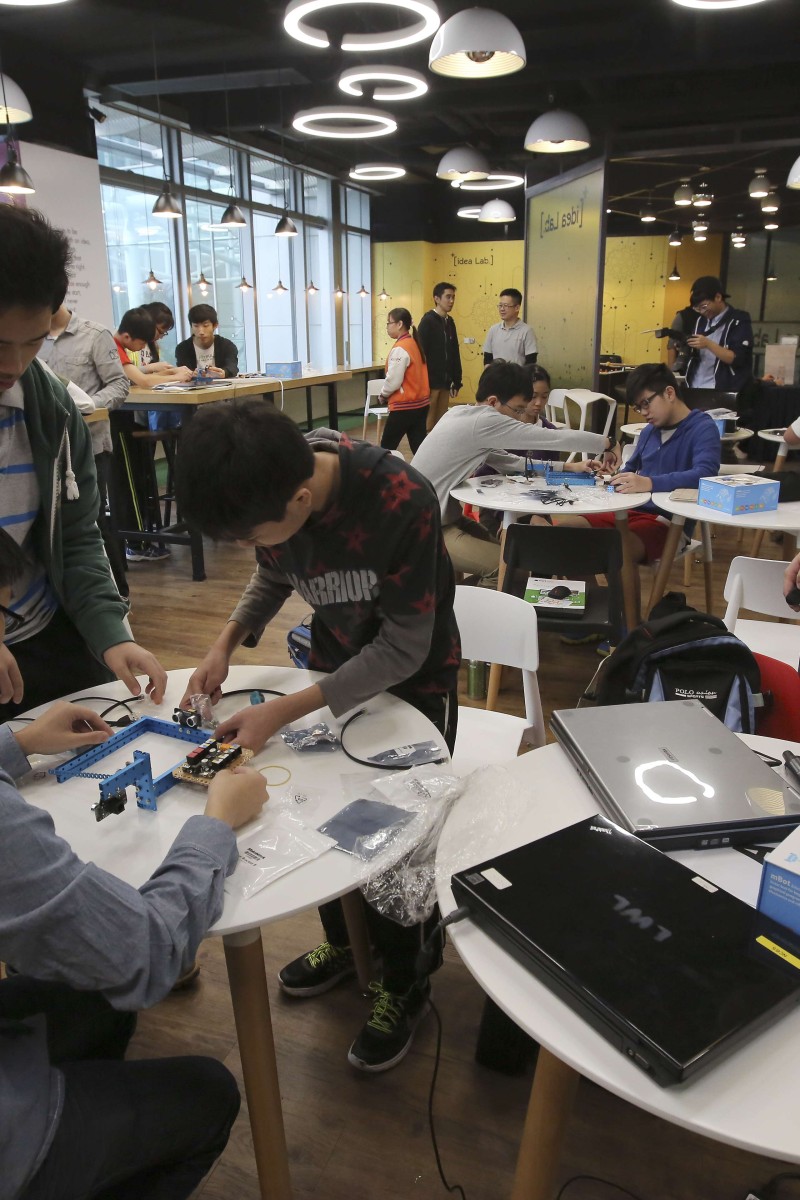
City Challenge introduces 6 technologies that are set to turn Hong Kong into a smart city
Hong Kong is on a mission to bring the city to life with lots of smart technology
 Makeblock Coding 101 is both practical and fun.
Makeblock Coding 101 is both practical and fun.The Hong Kong Science and Technology Parks Corporation launched a programme called City Challenge to attract new ideas to turn Hong Kong into a smart city. YP Junior Reporters Armaan Dayal and Cherry Lau went along to one of the intermediate workshops to find out about six new pieces of technology that could help Hong Kong.
The Internet of Things
The Internet of Things (IoT) refers to the network of physical objects that have embedded censors and software, meaning they can exchange data with other objects.
We took part in a workshop that taught us how to use this technology. The workshop explored how we could use the “if this then that” command, which uses sensors on a circuit board to analyse changes in the surroundings and alert the user.
For example, if it rains, then the board (on a vehicle, typically a small Lego car or robot) wirelessly connects to a website or emails the user about the situation, or updates a blog, or does something similar to share the data based on the settings you have chosen.
And this technology has everyday, practical uses – motion sensors that switch lights on when they sense people moving; sound sensors that switch on microphones or cameras when they detect sound. Things like that can help humans use less energy and work more efficiently.
3D Printing
The 3D Printing workshop for beginners showed us the many different types of 3D printers, made for different purposes. We were trained on how to design feasible, printable 3D designs and were exposed to slicing software – programmes that cut designs into layers for 3D printers to print – and looked at some finished products to discuss the merits and areas for improvement for each one.
Armaan Dayal
Smart city maps
We all use maps for directions, but most of us probably don’t know much about the data that is required to make them.
The Map-ArcGIS Online workshop showed us how to incorporate city data by using the ArcGIS Online software. We explored how to create our own maps, including altering the style, for example, choosing Google maps or satellite images, and introducing features to the map, such as adding a landmark or a building using symbols.
Apps for all
Everyone loves playing games on their phones, but have you ever thought about developing your own app? The Writing App 101 workshop taught us how to use the App Inventor 2, created by the Massachusetts Institute of Technology, to create our own app in a step-by-step way.
Customisation was a major focus throughout the workshop, and we could decide the colour of individual details or change the background according to our preference, letting our imagination run wild.
Building a game from Scratch
Most of us have ideas about what would make a great game, and with the help of a software programme called Scratch, we could turn those ideas into reality. We were able to develop a simple racing game with ease. A lot goes into building a game, but we were able to experiment with the basics, such as moving an image and producing a sound, using simple components known as “blocks”.
Lego for adults – Makeblock Coding 101
Makeblock is a tool that has been called “Lego for adults” and consists of mechanical components and sensors that allow people to build their own robot.
Another element of this construction-based workshop was using Arduino software to write codes.
I was able to build an intelligent car park. The idea was that it would use ultrasound emitters and sensors to control the gate. When a car approached the gate, it would result in ultrasound waves being reflected from the car onto the sensor, which would in turn trigger the sensor to open the gate.
When it comes to a task like this, it’s not only the programming that matters, but all of the physical details, too. One example would be getting the right angle of the gate, which is critical to making sure all the sensors register an approaching car. Overall, it was an eye-opening and useful experience.
Cherry Lau